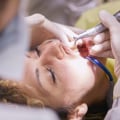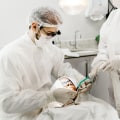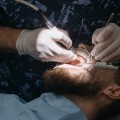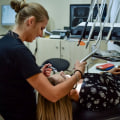Good dental hygiene is more than just brushing your teeth—it’s a daily commitment to habits that protect your overall health, confidence, and long-term well-being. Many people think of a bright smile only in terms of appearance, and while services like cosmetic dentistry in Danbury can enhance how teeth look, the foundation of truly healthy teeth and gums always begins with consistent, effective oral-care practices at home. Understanding what makes good dental hygiene helps people of all ages prevent problems before they start, reduce the risk of pain or infections, and maintain a smile that feels clean, comfortable, and strong. Building these routines isn’t complicated, but it does require dedication and awareness of how small daily choices impact your mouth over time.
Daily Practices That Support Healthy Teeth
At the core of dental hygiene is proper brushing, which most dentists recommend doing at least twice a day with fluoride toothpaste. Brushing removes plaque—a soft, sticky film filled with bacteria that can damage enamel and irritate gums if left untreated. Many people brush regularly but don’t brush long enough; the ideal brushing time is two minutes per session. Gentle, circular motions are more effective than brushing too hard, which can actually wear down enamel. Along with brushing, flossing plays an equally important role in cleaning the spaces between teeth where toothbrush bristles can’t reach. Flossing once a day helps prevent gum inflammation, trapped food particles, and cavity formation in tight areas. Mouthwash can also be a helpful addition, especially for rinsing away lingering bacteria and keeping breath fresh, although it shouldn’t replace brushing or flossing.
Healthy Eating and Its Impact on Oral Care
What people eat every day also plays a major role in dental hygiene. Foods high in sugar—such as candy, soda, and sweetened snacks—can stick to the teeth and become fuel for bacteria that produce acids. These acids slowly weaken enamel and can eventually cause cavities. Choosing water instead of sugary drinks, eating crunchy fruits and vegetables that naturally clean the teeth, and limiting frequent snacking are simple steps that support strong dental health. Calcium-rich foods like yogurt, cheese, and leafy greens help reinforce enamel and contribute to overall bone strength. Even the timing of meals matters; snacking constantly throughout the day exposes teeth to more acid, while eating balanced meals gives saliva time to naturally wash away residue.
Preventive Care and Professional Support
Regular dental checkups are another essential piece of good dental hygiene. Even with excellent brushing and flossing habits, professional cleanings help remove hardened plaque, known as tartar, that can’t be removed at home. Dentists and hygienists also catch early signs of problems—like cavities, gum irritation, or enamel wear—before they become more serious. Routine visits usually take place every six months, but some people may need appointments more often depending on their individual needs. Preventive care also includes using dental tools correctly, replacing toothbrushes every three to four months, and paying attention to changes in the mouth, such as sensitivity, bleeding gums, or persistent bad breath. When combined with healthy habits at home, these practices create a strong, long-lasting foundation for excellent oral health that supports a confident smile for years to come.



